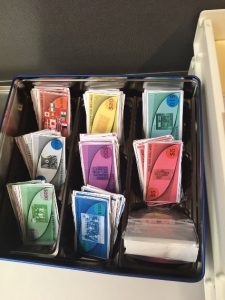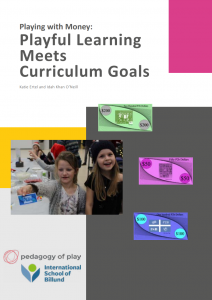Playing with Money
The setting:
Idah and Marc are P2 teachers at ISB. As Idah and Marc try to incorporate more playful learning into their curriculum, they encounter challenges stemming from one of the paradoxes between play and school: In school the agenda is generally set by the adults. In play, children are in charge.
The situation:
For their six-week transdisciplinary unit on money, Idah and Marc create playful opportunities that they hope will lead to increased subject-area learning: math skills such as strategies for addition and subtraction and social studies skills such as organising money wisely and understanding how buying and selling works.
The unit begins with students looking at currencies from their home countries and designing a class currency. Afterwards, Idah asks the students how they might use their class money. Students suggest earning money for jobs they have around the classroom. As the dramatic play around their salaries unfolds, Idah and Marc introduce a chair tax, a water tax, and a toilet tax to create more opportunities for arithmetic.
With mounting earnings from their class jobs, the students’ desire to mimic the real world escalates: they want somewhere to spend their money. The students propose a class shop.
The dilemma:
Upon hearing the children’s idea and seeing their excitement, Idah and Marc feel torn. They want to say “yes” to the children, and a class shop would certainly extend the children’s play. It might even provide opportunities to reach more curricular learning goals. On the other hand, it would take precious time from other activities Idah and Marc have planned. There are also logistical concerns—what would go in the class shop? Who would manage it? When would students get to play in the shop?
Discuss:
What should they do?

